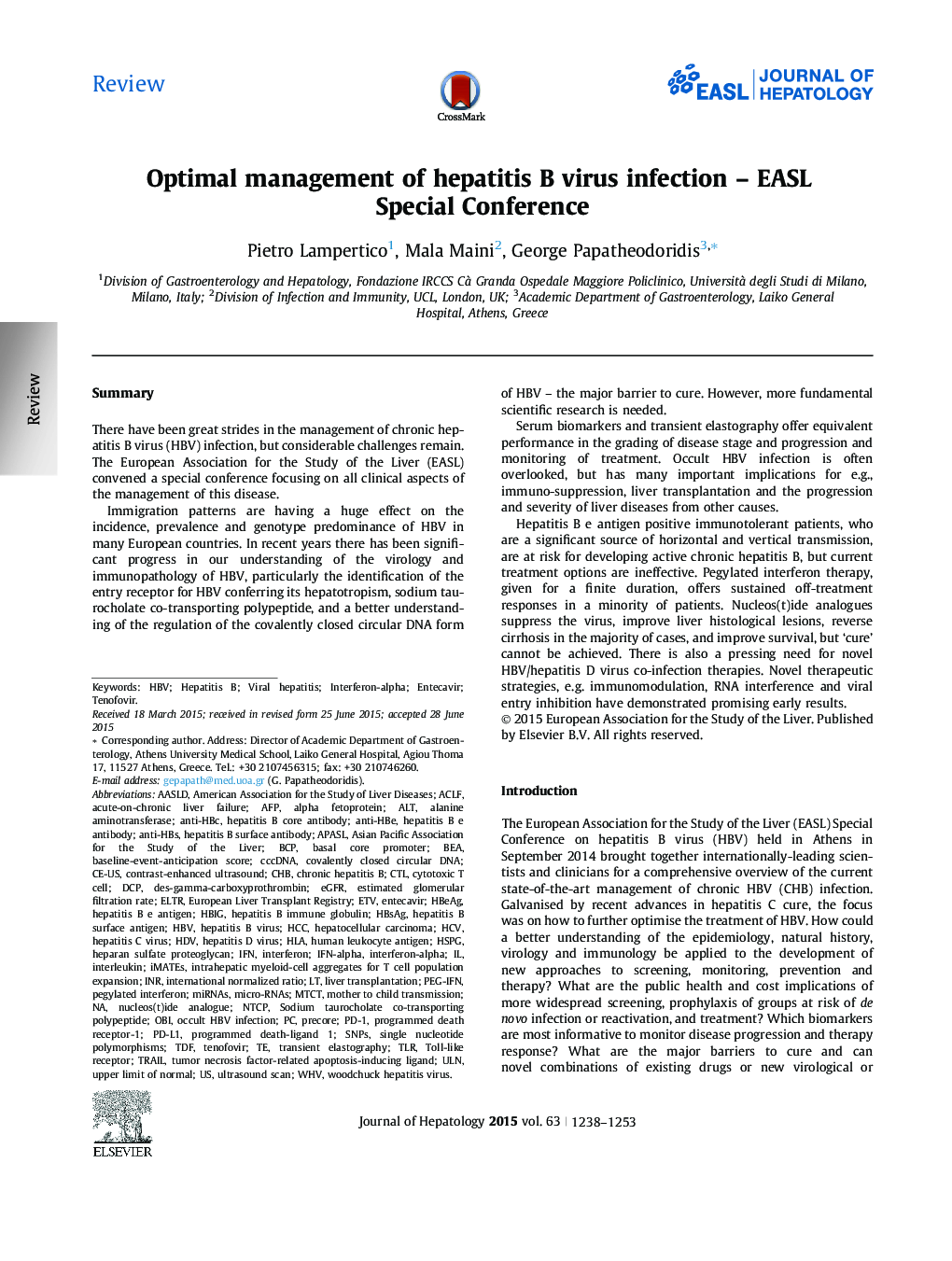| کد مقاله | کد نشریه | سال انتشار | مقاله انگلیسی | نسخه تمام متن |
|---|---|---|---|---|
| 6101336 | 1211104 | 2015 | 16 صفحه PDF | دانلود رایگان |

SummaryThere have been great strides in the management of chronic hepatitis B virus (HBV) infection, but considerable challenges remain. The European Association for the Study of the Liver (EASL) convened a special conference focusing on all clinical aspects of the management of this disease.Immigration patterns are having a huge effect on the incidence, prevalence and genotype predominance of HBV in many European countries. In recent years there has been significant progress in our understanding of the virology and immunopathology of HBV, particularly the identification of the entry receptor for HBV conferring its hepatotropism, sodium taurocholate co-transporting polypeptide, and a better understanding of the regulation of the covalently closed circular DNA form of HBV - the major barrier to cure. However, more fundamental scientific research is needed.Serum biomarkers and transient elastography offer equivalent performance in the grading of disease stage and progression and monitoring of treatment. Occult HBV infection is often overlooked, but has many important implications for e.g., immuno-suppression, liver transplantation and the progression and severity of liver diseases from other causes.Hepatitis B e antigen positive immunotolerant patients, who are a significant source of horizontal and vertical transmission, are at risk for developing active chronic hepatitis B, but current treatment options are ineffective. Pegylated interferon therapy, given for a finite duration, offers sustained off-treatment responses in a minority of patients. Nucleos(t)ide analogues suppress the virus, improve liver histological lesions, reverse cirrhosis in the majority of cases, and improve survival, but 'cure' cannot be achieved. There is also a pressing need for novel HBV/hepatitis D virus co-infection therapies. Novel therapeutic strategies, e.g. immunomodulation, RNA interference and viral entry inhibition have demonstrated promising early results.
Journal: Journal of Hepatology - Volume 63, Issue 5, November 2015, Pages 1238-1253